|
Like many musicians with regular day jobs, I’m forced to limit my number of performances during my busy times at work. I’ve been in the teaching profession for over a decade now, so summer is my off-season for work, but my peak season for performing. Not only can I manage more gigs in the summer months, but the types of venue also increase, allowing for some of my favourite gigs: festivals, fairs and outdoor music series.
I really love when music and art can happen in the common places of a city. As a culture we tend to think of live music as belonging to certain places or times only, but I love to see music brought out from the dark corners of the pub and showcased on the street or in the public park. Some highlights for me have been the highland games that I’ve played in Maxville, Ontario, and in New Brunswick. I’ve also enjoyed playing in the live music series at Lamoureux Park in Cornwall, ON. So far this summer I’ll be playing at the Williamstown Fair on August 5, and at the Cornwall Music Fest on August 20. These types of outdoor events are the highlight of my music year, offering a chance for the whole community to come out for good food, drink and tunes. If you’re in the Cornwall area, I hope to see you at one of these events!
0 Comments
Most contemporary music doesn’t deal with death. Except for the occasional country song lamenting a dead parent and some violent rap songs, most music on the radio today sticks to romantic love exclusively. Love songs are great, but there certainly are other aspects to life that are as universal, if not more so. Not everyone will experience romantic love, but everyone experiences death.
The common defense of this exclusion of death from pop music is that it’s depressing. Maybe so. But, there’s an alternate perspective that stresses that art should help us learn about and explore our emotions, not only our positive ones. Maybe songs about death can take some of the shock out of it. They may also help us in the grieving process. It’s obvious that such songs can have different meaning for different people, and for the same individual in different moods. A subset of folk music about death is the murder ballad. Some sources identify this as a particular subgenre that came to prominence in the 19th century broadsheet tradition. That’s one way to look at it, but there certainly were earlier murder ballads. Common features are a description of the killer and victim, who were often lovers, followed by a description of the murder (often gruesomely specific), followed by repentance of the killer and/or a visit from the victim’s ghost. As a folk singer, I find these songs interesting, though I haven’t gone out of my way to learn them any more than other folk songs. I suspect the fact that they are so different from contemporary music draws me to them. So far I have posted two to my YouTube channel: “The River Saile” and “Tom Dooley,” and am in the process of learning “Banks of the Ohio.” It’s been interesting to see the comments of my viewers on these videos, as many seem to object to the murderous content. Some listeners assume that to sing a song means the singer endorses the actions or sentiments expressed in it, which for me isn’t the case. I often sing songs that have very little to do with the circumstances of my life, and sometimes from the perspective of women or from the perspective of villains. Many of the songs I sing are also very conservative in morality/perspective, since they are so old. They sometimes contain sexist and/or racist notions, but that doesn’t mean that I endorse those views. Instead, I think of these songs as a living record of European culture, including the good, the bad and the ugly. Murder and violence have always been part of human culture, and likely always will be. I think to ignore the folk songs that cover those subjects is unwise. I can see how some people would disagree, but the folk tradition is vast enough for different perspectives. As for myself, I will continue to sing the songs that appeal to me as pieces of art and history, without artificially selecting them for their correspondence to my own moral views. May 8, 2015
Found-Object Drum Set I’ve always been a fan of anything that gets art into more places, especially places that we don’t often think of that way. That’s why I’m such a fan of buskering (playing music for tips in public). I also am a fan of anything that “unlocks” the music within people or objects. Finally, I’m a fan of recycling and reusing, especially when it’s easy to do. As it happens, my latest musical experiment incorporates all of these elements: I’m working on a junk drum set. I considered the elements in a traditional drum set (snare, bass drum, toms and cymbals), and I asked myself whether I could replicate them with objects I found either at home, or in my neighbours’ recycling bins. Originally, I toyed with making a DIY bass pedal for a larger bass drum, but ultimately, I wanted a junk drum set that was smaller and more portable, without need for a stand to hold the various elements off the ground. I also watched several YouTube videos on found percussion and improvised drums. I found some great ones, like the ones of the Italian drummer Dario Rossi (click here to see his). Some of the drummers quite naturally arranged the found objects on the floor in a semi-circle around themselves, usually sitting cross-legged on the floor. The arrangement looks like the top tier of a typical drum set. My objects are currently as follows: Sticks: two sticks cut from a tree in the woods. I left the bark on the handle portion for a rustic look. Bass drum: medium-sized cardboard box, from a laptop. Snare drums: metal toolbox and a frying pan with a metal jar lid and bottle caps inside. Cymbals: metal lamp, camp cooking pot and drinking cup. Miscellaneous: tambourine and wooden frog (these two are cheating, technically, as they’re purpose-made instruments). I’m neither a trained stick drummer, nor even an experienced one. I’ve only used hand drums (djembe, bongos, bodhran, etc.) so far, and rather simply at that. I have rhythm, but haven’t pursued technical drumming, or drumming with sticks in particular. I’ve always been interested to learn but didn’t pursue it because drum kits are so loud, large and expensive. Also, as a vocalist, drumming wouldn’t be something I could likely do on stage. So, my junk set seems like a good way to work toward better percussion skills in a cheap and easy setup. Here are some pros and cons of this type of improvised set: Pros: 1. Free 2. Reuse and recycle old junk 3. Easy to transport (the whole set fits in a large suitcase) 4. Visually interesting, compared to the same old drum set everyone has seen 5. Not as loud: better for apartments and live acoustic jams 6. Easy to experiment/adapt. New pieces are all around and free Cons: 1. Not loud enough for live shows (though would be with microphones) 2. Some might laugh at its unconventional look 3. The items move on the floor, so precision takes adaptive playing 4. Would be hard to see in a concert setting (on the floor) 5. Durability for some items is an issue (e.g. the cardboard box), but replacements are free 6. Doesn’t have that ‘rock star’ look In the end, I don’t plan to become a professional junk drummer (and, yes, such a thing does exist, as in the group STOMP), but I do plan to improve my percussion skills in general, which I believe has already happened in the few weeks of practice. In particular, my left (non-dominant) hand is coming into its own. This kind of experimental drumming is addictive—grab two pencils or a set of chopsticks, start banging on the desk and you’ll see what I mean! I have been performing publicly for over 10 years now, and most of my hundreds of performances have been solo. Over the years I have tested and fine-tuned my sound rig, attempting to get the best performance from the least amount of equipment. I have often gone to performances completely alone, and so the portability of my setup has been important, unless the venue has a PA system that I can simply show up and plug into (even that has its pitfalls, as it leaves me at the mercy of whoever last used the system).
Briefly, my criteria for a sound set-up are as follows: 1. It has to be possible to carry the entire set-up by one person (me) in one trip from the vehicle to the stage. 2. It has to fit in a standard passenger car (mine is a hatchback/wagon). 3. It has to be sufficient to play a small or medium room (bar, café, etc.). 4. It has to be easy to use and set up. 5. It has to be affordable. The set-up I arrived as is just able to cover all of these categories, and here are the components (see the adjacent diagram). I’ll list the prices (in Canadian dollars), but these are approximations, as some items were purchased many years ago. 1. Amplifier: Fishman Loudbox Performer (Acoustic), 130 watts. Paid: $400 used (originally approx. $700). 2. Microphone: Peavey vocal microphone, approx. $100. 3. Microphone stand and cords, approx. $75. 4. LED Pot light/Spotlight: Microh DJ Blade 64 Pro, $100. 5. 2 Heavy-Duty Extension Cords, approx. $30. 6. Custom Sign: VistaPrint, approx. $30. 7. Battery operated LED set (for CD display), approx. $5. 8. Duffle bag: $30. Total: $770, Excluding the cost of the guitar and harmonicas. This rig paid for itself after the first few gigs, and having my own sound system has allowed me to take on many more gigs in different venues. Obviously, running such a bare-bones setup has its drawbacks, but here are some tips for optimizing it: 1. To avoid feedback, use the anti-feedback function on the amp. Position the amplifier a little ahead of the performer. Also, don’t aim the amplifier directly at a wall or bar that is close by. The sound will echo back and cause feedback. Aim it down the room. 2. Place the amp on a sturdy chair or small table (commandeered from the venue) to raise it off the ground. This will help the sound carry over people’s bodies, tables, etc. Barring that, tilt the amp up using its kickstand. 3. Angle the amp a little toward the performer to allow for a monitor-type effect. The sound will catch the right ear of the performer as I typically set it up. 4. Position your pot light/spotlight at your side so that the glare isn’t directly in your eyes. LED is preferable to halogen or incandescent, as LED is much cooler. 5. A small custom sign from Vistaprint will fit inside some guitar cases (under the guitar body), protecting the sign from damage. Combined with a $5 LED light set, the sign adds interest to your CD display. I have felt on a few occasions that this system just wasn’t enough, for instance in a full house on St. Patrick’s Day, but most of the time this is more than adequate. I can arrive on the stage by myself and within 15 minutes be ready to play—that’s hard to beat! 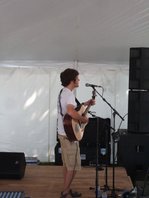 A number of my listeners have asked about the origin of my online title, The Bard of Cornwall. The name has caused some confusion over the years, with many people assuming that I come from Cornwall, England. So here is the definitive account. Back in my high school days, I was in the habit of choosing online handles like The Earl of Cornwall, The Duke of Cornwall, and The Bard of Cornwall. Obviously, these were tongue-in-cheek labels, though they did at least indicate my hometown of Cornwall, Ontario, Canada (not far from the US border or from our nation’s capital, Ottawa). When using a service like ICQ, MySpace, MSNmessenger, or later FaceBook and YouTube, I would change these names every once in a while for variety and security. So, that’s how it happened when in 2007 I created an account on YouTube, never intending for my music channel to be more than an experiment. But, as the channel gained momentum and viewers from around the world, I started to take it more seriously both as an artistic outlet and as a means to promote my in-person music performances. Eventually I decided to start using my real name on YouTube, in order to ‘stand behind’ the work more openly, and to make it easier to coordinate with prospective booking agents. Since I had chosen the name Bard of Cornwall ironically—there are actual Bards of Cornwall, in Cornwall, England—I tried to remove that name from my YouTube channel, but the name had stuck with many of my listeners, and I couldn’t change the URL name in either FaceBook or YouTube. So, rather than create an entirely new channel, I opted to leave the Bard of Cornwall name here and there, for instance in the tags on each video. I’m aware that a person can’t self-identify as his community’s bard, as that’s a position chosen communally, and the title is a matter of honour. Bards were important carriers of communal memories in the age before universal literacy, and they usually would have been full-time musicians. So, again, I chose the title ironically. Nevertheless, I think that there is some overlap in my mission to preserve traditional folk music and the role of traditional bards. And indeed the job is easier now—a 17th-century bard could play before a handful of nobles at a banquet, but ‘cyber bards’ can play before literally millions of people at once. And that’s the story of how Jesse Ferguson, a folkie from Canada, came to be known as The Bard of Cornwall on YouTube. I tend to think of my YouTube channel as my most important musical work, not because I put most effort into the production of the videos (I put much more time into my studio recordings) but because the channel is free for anyone online, anywhere in the world. Most of my CD sales and bookings for live performances come from fans of my YouTube channel. I also feel that my channel, and others like it (for instance those by Raymond Crooke and KelticKev), is important because it makes recordings of traditional folk songs accessible for anyone with an Internet connection. My recorded CDs do that too, but far fewer people will buy the CD, so the YouTube channel remains more important.
Accordingly, I tend to celebrate the various milestones for my channel, which is now into its 8th year. Not too long ago my channel surpassed 3 million views from people around the world, but my most recent milestone is the posting of my 300th video. Technically, I’ve posted that number already, as my very first videos were taken down and re-recorded with better equipment, but this is the first time that 300 videos have been live on my channel. I was pondering the possibilities for that 300th video, and I put the question to my followers on Facebook. One listener (an old high school buddy, Mark) gave a neat suggestion—make an alternate arrangement of the first song I ever posted to YouTube. That video, as it turns out, was of the Irish song “The Leaving of Liverpool” performed on mandolin. The song is an upbeat one popular at pubs and festivals, but the lyrics are actually quite sad, involving a young sailor leaving his sweetheart to make a dangerous sea voyage to California. Sadly, the original file of the song that I uploaded in 2007 is gone forever, but my rerecorded version of the song’s traditional melody is available here. So, my task was to create an original arrangement for this classic folk song. Since the lyrics are bittersweet, I thought that changing the major key to a minor one would highlight that sad quality. I started tinkering with the chord arrangement, using a fingerpicking style instead of my usual vigorous strumming for this song. I’m quite pleased with the results, which one might argue suit the lyrics even better. I know that listeners are usually divided on these types of rearrangements—some love the new take on an old song, but many think it sacrilegious to tinker with classics in this way. Obviously, I have no issue with it, and can enjoy both traditional and rearranged versions of folk songs, though I do appreciate when new arrangements stay faithful to the sentiment of the lyrics. So, please have a listen, and let me know what you think. For those of you who’ve followed my channel so far, thanks for your support. I look forward to bringing you the next 300! Well, it’s that time of year again—Christmas is coming, and for the last four years I’ve made it a custom to learn and post a Christmas song to my YouTube channel. I, like many of you, really enjoy Christmas music, but by the end of the holiday season I’m sick of hearing it. The problem is compounded by how every year the stores and supermarkets are playing it earlier and earlier. So, what happens is that I learn a new Christmas song, which involves playing it over and over until it’s second-nature; then I don’t touch the song again for 11 or 12 months. I forget how to play it in the off season. When I was recently asked by award-winning singer-songwriter Nancy Beaudette to open for her annual holiday concert in Williamstown, ON, I was caught not knowing how to perform any Christmas songs “by heart.” This forced me to get around to learning my annual song for posting to YouTube; this time I chose “God Rest Ye Merry, Gentlemen” (click here to listen). The dramatic melody of this song always appealed to me when I was younger, and it was a real pleasure to learn it in its entirety. I also like how it’s a traditional song, with no known author, so it seems to fit with my folk music channel. Christmas music, perhaps more than any other popular music, seems to function like traditional folk music: people from all over know the same songs. We also hold onto them and connect them to communal traditions. Unlike most pop music, the Christmas classics will likely be around for decades, if not centuries. So, I hope you like my rendition, and the Christmas playlist I’ve started on my channel. Happy holidays! 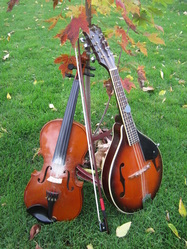 10. The Music Is Good: None of these other reasons would matter if the music didn’t stand on its own. The best reason to learn and perform traditional songs isn’t for political or practical gain: it’s because the music is good. There are striking melodies and authentic lyrics that cover the whole spectrum of human life and emotions. It won’t cost you anything to try it, but it could pay off in more ways than one. Traditional music is yours by birthright, so try it already! 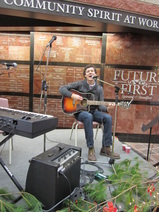 9. Participate in a Long Tradition: All music is part of a tradition, even the throw-away pop songs currently in fad, but folk music consciously taps into a long, venerable tradition. I can hardly imagine people in 200 years singing a Brittany Spears song, but I can imagine people still singing “Amazing Grace,” “Auld Lang Syne,” or “Greensleeves.” By learning and performing traditional folk music, you can participate in something that will outlive you and the particular fads of today. It’s not so much about individual ego as it is about understanding our place in the musical tradition, and for some (like myself) that can be a consoling thought. We are all mortal, but there is something in the best folk songs that endures. 8. Improve Your Songwriting:
You’d probably like your songs to be remembered for more than 15 minutes. But, how to do that? Well, if we only learn and perform other songs in the current trends, then those are the musical structures, themes, etc. that we will internalize. If you only listen to the flavour of the week, then that’s likely what you’ll write. Traditional folk music, on the other hand, has stood the test of time. So, we can enrich our own songwriting by studying those examples that prove a song can be relevant for hundreds of years. Don’t stop following current trends and the great music of today, but traditional folk music can help you ground your original songs in those deep themes and concepts that go to the root of our humanity. Modern music, after all, evolved from traditional folk music. |
Jesse's BlogThoughts on music and performing by Canadian singer-songwriter Jesse Ferguson. Categories
All
|
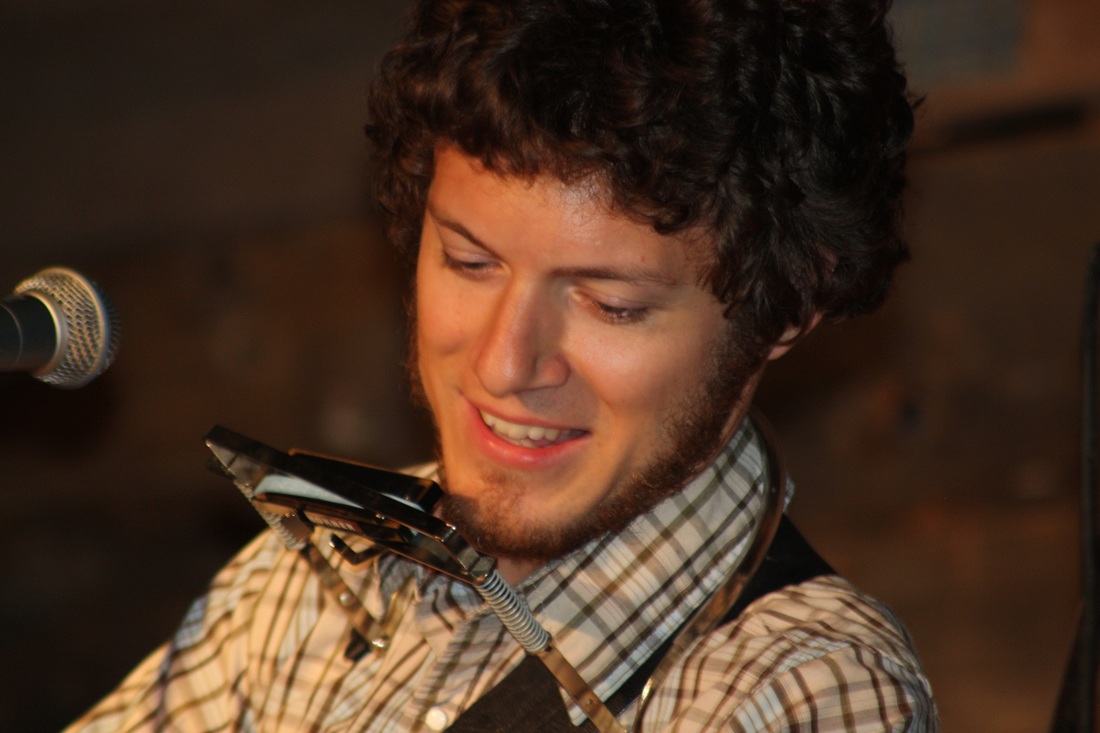
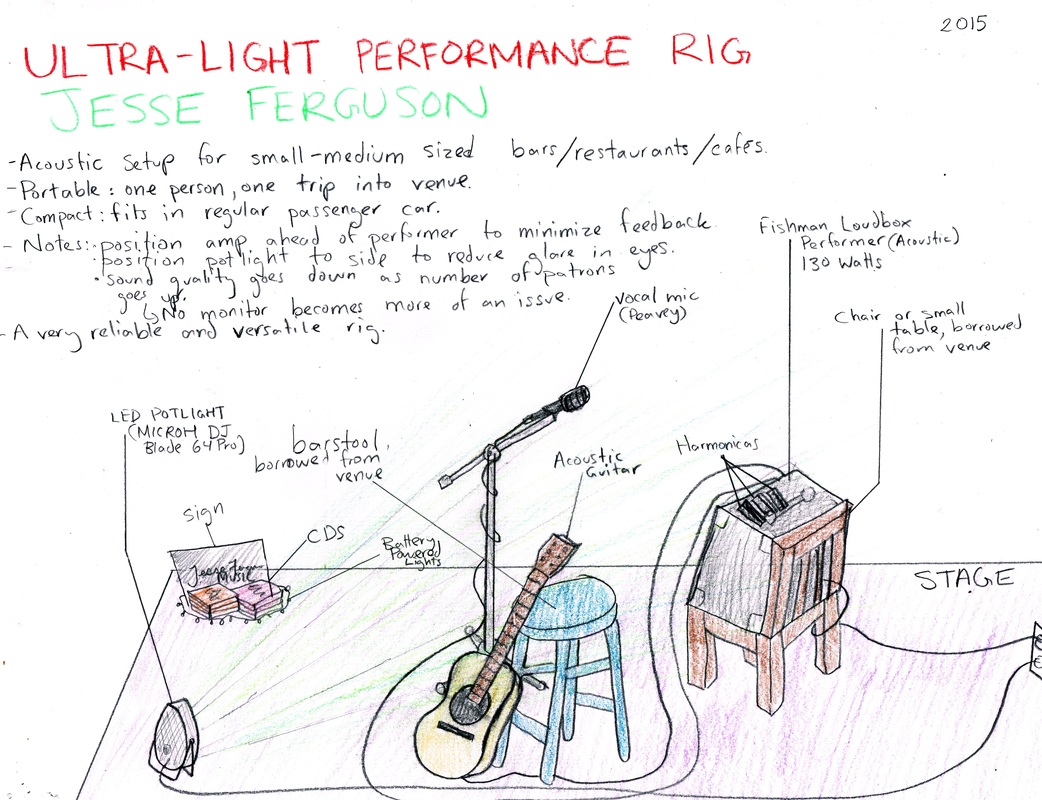
 RSS Feed
RSS Feed
